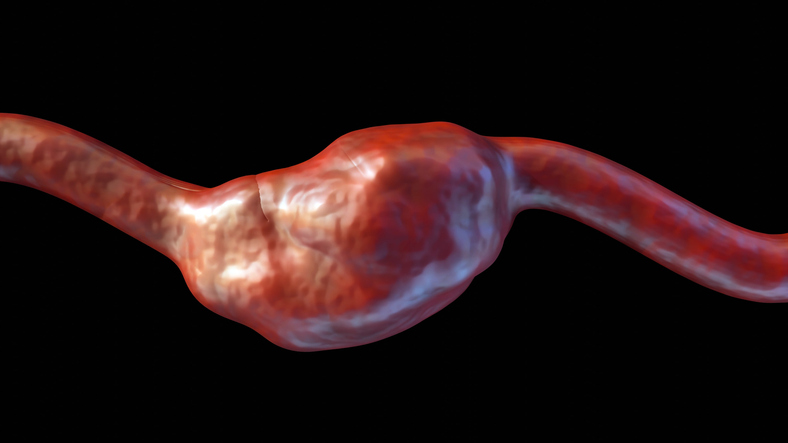
Heart failure with preserved ejection fraction (HFpEF) accounts for more than half of all heart failure diagnoses.1 Limited medical therapy exists for reducing HFpEF mortality compared to HFrEF. Researchers at the Cleveland Clinic investigated the use of a left atrial assist device (LAAD) in vivo and in an animal model for the management of HFpEF.2
In Vitro Model.
The LAAD is implanted in the mitral valve position and pumps blood from the left atrium (LA) into the left ventricle (LV). It can pump up to 10L/minute to support cardiac output (CO).2
The investigators first studied the LAAD’s effectiveness in an in vitro model using a mock LV. The arterial compliance was set to an aortic pressure (AoP) of 120/80 mmHg. Diastolic heart failure was simulated by restricting the diastolic filling of the mock LV by increasing the diastolic driving pressures of the device.
Without the LAAD in place, CO decreased from 4.6L/min under normal heart conditions to 3.4, 2.2, and 1.1 L/min under mild, moderate, and severe diastolic heart failure conditions, respectively. With the LAAD running at 4400 rpm, CO recovered to normal heart conditions.
In Vivo Model.
The LAAD was implanted into 6 male Jersey calves via thoracotomy. The mitral leaflets were resected and the LAAD was placed at the mitral annulus. Diastolic failure was simulated via inflation of an LV apical balloon. The investigators found without the LAAD in place, balloon inflation caused a decrease in CO and AoP with an increase in LAP and LV end diastolic pressure, effectively simulating HFpEF conditions.
With the LAAD in place, CO increased from 5.4 to 6.1L/min when LAAD speed increased from 3600 to 4400 rpm. Mean AoP increased from 3600 to 4400 rpm while LAP decreased at higher LAAD speeds, up to 5200 rpm.
Epicardial echocardiography showed stable position of the LAAD with no LV outflow tract obstruction or leakage around the LAAD. At LAAD explant, the first iteration of the device demonstrated some thrombi in the device which could have explained some suction events. The second iteration of the device did not have this problem.
The investigators concluded that the LAAD increased CO and AoP while decreasing LAP under diastolic heart failure conditions. The LAAD has advantages over other investigational devices for HFpEF in that it provides pulsatile flow, directly reduces LAP and fills the LV, while maintaining arterial pulsatility.
A concern is that the LAAD may increase LV end diastolic pressures via forced LV filling. Furthermore, HFpEF physiology may not have been fully mimicked with inflation of the LV apical balloon. Next steps include studying the LAAD under chronic HFpEF conditions, determining anticoagulation requirements, and evaluation of concomitant right heart failure.
Dr. Randall Starling, a Professor of Medicine at the Cleveland Clinic and co-investigator of this study states, “We conceptualized the left atrial assist device a few years ago. The first step was bench testing in a mock circulation of the prototype. We were quite encouraged and sought funding. The next big challenge was developing an animal model that would represent HFpEF physiology which has been problematic. Our balloon model is not perfect. The process of developing a pump for human use is long and arduous. Dr Fukamachi and his experienced team are an amazing group I am privileged to collaborate with on this novel project.”
This is an exciting new frontier for HFpEF and future studies are warranted.
https://twitter.com/Mitrovalvology/status/1525748353094406144?s=20&t=ty5oDWXWELrwlvBfEZ8O_w
References:
- Pfeffer MA, Shah AM, Borlaug BA. Heart Failure With Preserved Ejection Fraction In Perspective. Circ Res. 2019;124(11):1598-1617. doi:10.1161/CIRCRESAHA.119.313572
- Miyagi C, Fukamachi K, Kuban BD, et al. Left Atrial Circulatory Assistance in Simulated Diastolic Heart Failure Model: First in Vitro and in Vivo. Journal of Cardiac Failure. 2022;28(5):789-798. doi:10.1016/j.cardfail.2021.11.024







 © 2025 Mashup Media, LLC, a Formedics Property. All Rights Reserved.
© 2025 Mashup Media, LLC, a Formedics Property. All Rights Reserved.